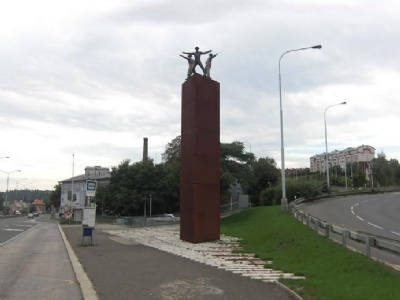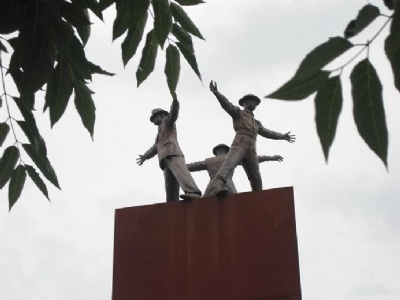Holesovickach
Himmler’s deputy and chief of RSHA, Reinhard Heydrich, had in the autumn of 1941 replaced Konstantin von Neurath as Bohemia-Mahren’s national protector and installed himself in Prague. The aim was to boost the war production in the protectorate and curb the Czech national will which had become annoying for the germans. Heydrich wanted to make the Czechs feel more like Germans than Czechs and he used both stick and carrot to accomplish this. This meant that Heydrich introduced certain benefits for workers, but also a much more repressive system than his predecessor. The Czech exile army in London, in collaboration with the English SOE (Special Operation Executive), began planning an attack against Heydrich.
The operation was named Anthropoid and was carried out by seven Czech commandos. These were parachuted over Bohemia Moravia in the last days of 1941. The coming months were preceded by planning and reconnaissance to map Heydrich’s routines and to establish radio transmitters and contacts with other resistance men in the Czech Republic. Two of the commandos, Jan Kubis and Jozef Gabcik, were the ones who would execute the attack itself and their main task was to find a suitable location for this. Heydrich usually travelled in an open car between his home in Panenske Brezany, just under twenty kilometres north of Prague, and his workplace in Prague Castle. Heydrich believed he did not have to fear for his life and the security around him was slack. He refused to have his home guarded and he insisted driving with the hood down and without escort. This was something that the attackers noted and they decided to carry out the attack when Heydrich was on his way to work. The location was decided to take place at a sharp curve on Holesovickach street where Heydrich’s car was forced to make a hard break where it almost came to stand still.
On May 27, 1942, about 10:00, Heydrich left his home for the last time, and half an hour later he approached the curve. A third resistance man, Josef Valcik, kept an eye out and signaled with a mirror to Jozef Gabcik as Heydrich’s car approached the curve. As the driver braked in, Gabcik ran out in the street in front of the car with his automatic weapon ready to open fire, but the weapon did not work. Heydrich’s car stopped and Heydrich got up and tried to open fire with his sevice pistol. Then the other attacker, Jan Kubis, threw a hand grenade that exploded next to the car and injured Heydrich. Heydrich’s driver took up the hunt for Gabcik but was injured in a shooting. Heydrich himself tried to chase Gabcik but soon fell to the ground as a result of the injured he had sustained. Heydrich was taken to a nearby hospital and operated.
When Himmler learned of the attack, he sent his personal doctor Dr. Karl Gebhardt to Prague to treat Heydrich. For a while it seemed that Heydrich would survive but he suffered blood poisoning and died on June 4. Heydrich’s body was first taken to the castle in Prague, then to Berlin, June 6, where he received a state funeral in the new Reich Chancellery. He was buried at the Invaliden cemetery in Berlin. After the war, the grave was destroyed and is now unmarked. Heydrich was the only high Nazi leader to be assassinated during the war.
Current status: Monument (2010).
Location: 50°07'04.24" N 14°27'54.37" E
Get there: Tram to Vychovatelna stop.
Follow up in books: Dougherty, Nancy: The Hangman and His Wife: The Life and Death of Reinhard Heydrich (2022).


After the attack, the Nazis set up a monument at the site of the murder, guarded by a honorary guard 24/7. This monument was removed after the war. Later the street was rebuilt and the sharp curve is no longer there. A monument dedicated to Operation Anthropoid was not established until 2007. The reason why it took more than sixty years to establish a monument lies in the political context. The attack was carried out not by communists but by Czechs who were seeking a free Czechoslovakia. Establishing a memory of these could fuel nationalist sentiments and this was something the communist leaders wanted to avoid. The fact that it took another fourteen years (Czechoslovakia’s partition) for the monument to come was due to something as banal as feelings of shame on the part of the Czech authorities. One was simply ashamed that no monument had been erected, which paradoxically had the consequence that it wasn’t until 2007 a monument was erected on the site of the attack.